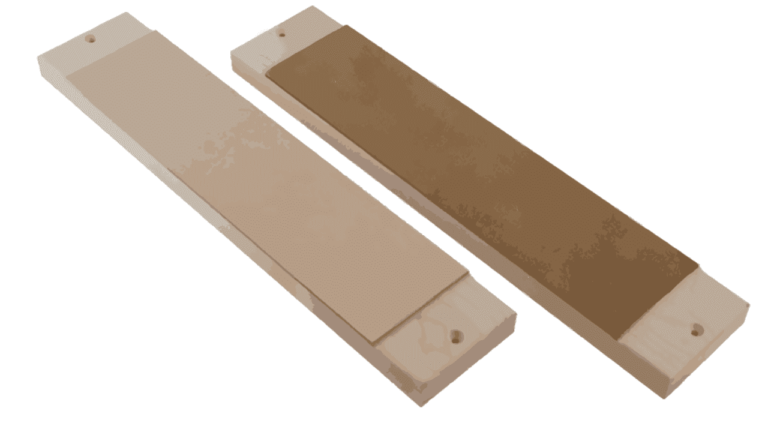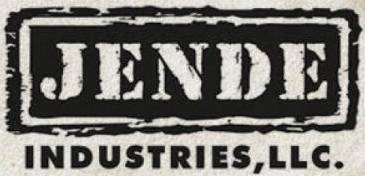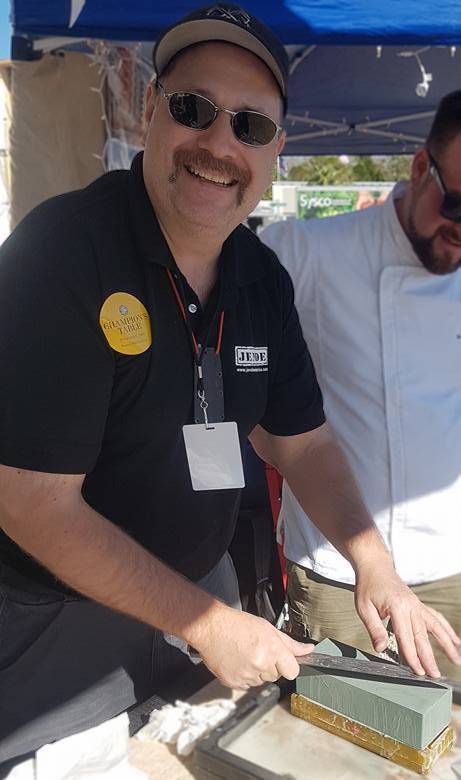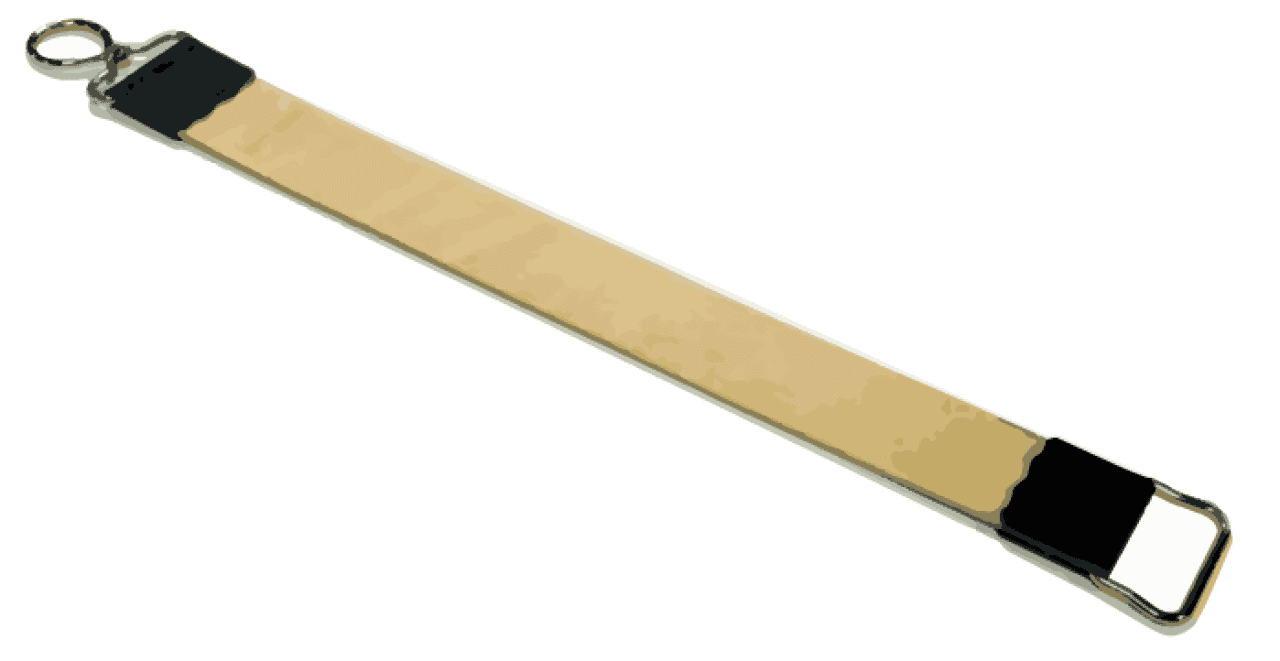Knife Sharpening
How To Strop a Knife: The Complete Guide to Stropping with Tom Blodgett
03.04.2018

This is Knife Planet’s complete series on Stropping Knives.
My name is Tom Blodgett from Jende Industries. I am thrilled to be involved with Knife Planet and hope to entice you up to the edge of the sharpening rabbit hole – and then push you in and jump up and down on top of you! I’m a firm believer that everyone is on their own sharpening journey, and I was fortunate to have had some very good mentors along the way. It is now my turn to pay it forward to you so you can avoid the unnecessary mistakes, while being coached through those mistakes everyone needs to make in order to progress to the next levels.

I started sharpening (poorly!) in 2000 and after trial and a whole lot of error, eventually got good enough to start a business in 2004. While we have since grown into an international company, sharpening has always been at the core. In the past 14 years, I’ve given countless sharpening seminars, including the US, China, Australia, Taiwan, Puerto Rico, Thailand and Japan, and am proficient in sharpening kitchen knives, woodworking tools, scissors, specialty edges and straight razors with just any about kind of sharpening stone or system – mechanized or manual.
How To Strop a Knife: The Complete Guide

The Stropping series will be split into different articles. Each article will be structured with a basic overview then will dive into more specifics, offering clear and useful information and techniques for beginner, intermediate and advanced levels. Even if some of the information presented may be above your current operating level, the seeds will have been planted for when that Ah-ha! moment hits.
We’ll update this page as we publish future lessons:
- Stropping Introduction – You’re reading this
- Unloaded Strops Analyzed – Fabric, leather and other strops under the microscope.
- Loaded strops – Strops loaded with compounds
The Basics of Stropping a Knife
The first installment will be about strops and stropping. The ultimate goal is to give you the necessary information that will point you toward defining what exactly you want to achieve with your stropping and what materials will help get you there most effectively. Along the way, we will discuss what stropping is and what it does along with pros and cons of different stropping mediums and abrasives.
So what is a strop? Many of us probably picture an old school barber’s strop with Tony the barber, Charlie Chaplin, Popeye, or even Bugs Bunny stropping a straight razor. A strop (sometimes called a strap – and not just autocorrected!) is traditionally a leather strip used to either burnish (pushing into position) and/or maintain or sharpen an edge through abrasion. Leather strops are most commonly made from cow leather, but the term strop can be applied to just about anything that is used in the final stages of sharpening and maintaining that isn’t classified as a stone. It includes other leathers like kangaroo and horse; textiles such as cotton, denim and linen; and a whole host of other mediums, including pressed felt, balsa wood, newspaper, and even fire hoses. More modern stropping materials have seen nanocloth and microfibers enter the game. Each stropping medium effects an edge differently, usually in terms of aggressiveness.

Hanging strop
There are two types of strops: hanging strops and bench strops (which include paddle strops). Hanging strops are the ones barbers and straight razor shaver generally use while bench strops are more universally used for knives, woodworking tools and even razors. Hanging strops are attached to a doorknob, hook or towel bar on one end, and have the advantage of being able to be pulled taut or left a little slack in order to conform to the edge. Bench strops are flat, and often mounted on a solid surface, such as wood, metal or an acrylic base and have the advantage of being more consistently flat. We’ll discuss flat vs. slack stropping further in a future installment.

Bench strops
The next logical question is what exactly does stropping do? On their own, “clean” strops pretty much only serve to reposition an edge and have no real abrasive action. The strop simply nudges the bent or rolled edge back into position with no abrasion. Loaded strops add abrasives to the surface of the strop, or are embedded with waxes and oils into the strop (also known as a treated strop). The abrasives remove metal at varying degrees depending on the type of abrasive, and are used to refresh, refine, polish, and even sharpen or hone an edge rather than merely push it back into position.
Conclusion
My approach to sharpening is more scientifically based. I tend to test and discuss the major theories surrounding sharpening using microscope pictures as the basis of an argument, keeping the language understandable and approachable to both beginner and expert sharpeners alike. The simple answer to every sharpening question is “it depends”, since each type of sharpener will have different needs. And even though the rules for sharpening everything are pretty much universal, an axe has different refinement and geometric needs than a razor blade. The idea of bringing ideas from different areas of sharpening together in one place is what I hope will whet your appetite as well as your sharpening stones.
We are now at the edge of the rabbit hole. You know what’s about to happen. Buckle up! We’ll update this page as more stropping lesson come out.









